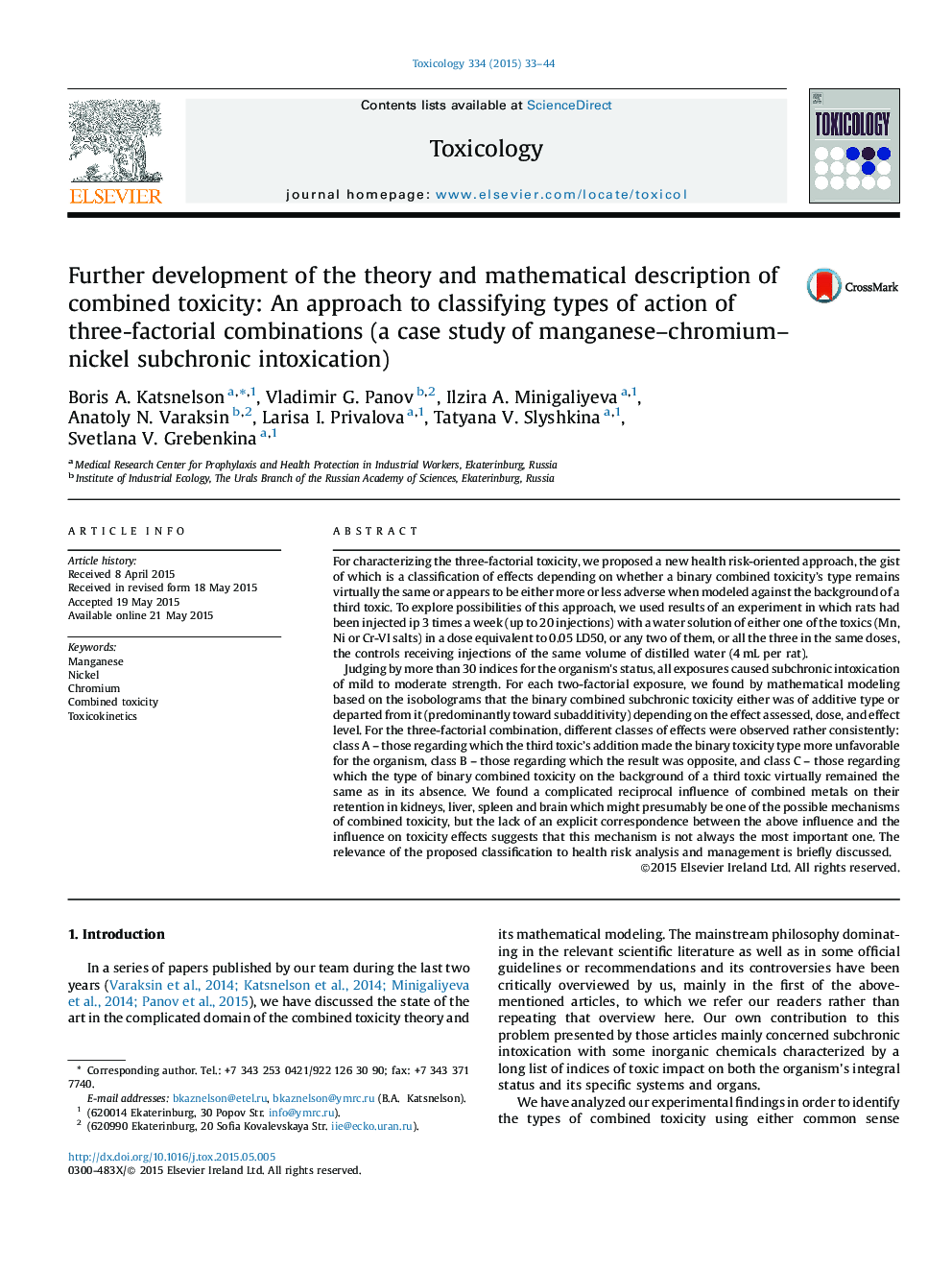| کد مقاله | کد نشریه | سال انتشار | مقاله انگلیسی | نسخه تمام متن |
|---|---|---|---|---|
| 5859051 | 1562322 | 2015 | 12 صفحه PDF | دانلود رایگان |

For characterizing the three-factorial toxicity, we proposed a new health risk-oriented approach, the gist of which is a classification of effects depending on whether a binary combined toxicity's type remains virtually the same or appears to be either more or less adverse when modeled against the background of a third toxic. To explore possibilities of this approach, we used results of an experiment in which rats had been injected ip 3 times a week (up to 20 injections) with a water solution of either one of the toxics (Mn, Ni or Cr-VI salts) in a dose equivalent to 0.05 LD50, or any two of them, or all the three in the same doses, the controls receiving injections of the same volume of distilled water (4Â mL per rat).Judging by more than 30 indices for the organism's status, all exposures caused subchronic intoxication of mild to moderate strength. For each two-factorial exposure, we found by mathematical modeling based on the isobolograms that the binary combined subchronic toxicity either was of additive type or departed from it (predominantly toward subadditivity) depending on the effect assessed, dose, and effect level. For the three-factorial combination, different classes of effects were observed rather consistently: class A - those regarding which the third toxic's addition made the binary toxicity type more unfavorable for the organism, class B - those regarding which the result was opposite, and class C - those regarding which the type of binary combined toxicity on the background of a third toxic virtually remained the same as in its absence. We found a complicated reciprocal influence of combined metals on their retention in kidneys, liver, spleen and brain which might presumably be one of the possible mechanisms of combined toxicity, but the lack of an explicit correspondence between the above influence and the influence on toxicity effects suggests that this mechanism is not always the most important one. The relevance of the proposed classification to health risk analysis and management is briefly discussed.
Journal: Toxicology - Volume 334, 6 August 2015, Pages 33-44